Chlorophytum
A plant often found in tropical forests. The foliage, which can reach half a meter in length, is collected in a rosette. Chlorophytum blooms with small white flowers, in the place of which layers with aerial roots are formed. They can be cut off and rooted in an earthen mixture of humus and sand.
Chlorophytum is unpretentious, and grows quickly in the summer. Prefers illuminated places and abundant watering. Reducing watering is only necessary in the winter months.
Experts have proven that chlorophytum perfectly cleans the air of carbon monoxide and formaldehyde, so it is recommended to grow it in the kitchen.
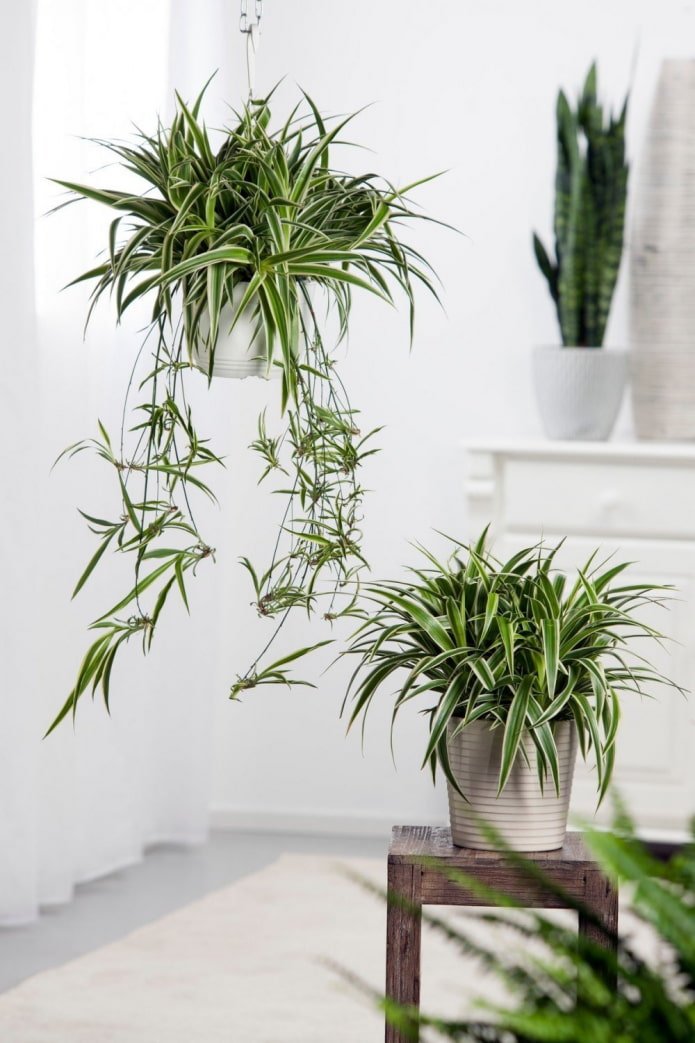

Climbing ficus
Among the huge variety of ficuses, there are also creeping ones. The most striking and unusual representative is the dwarf species of Ficus Pumila White Sunny. It is distinguished by creeping stems with small leaves of an unusual color – green with white edges.
This climbing plant prefers bright diffused light and moderate watering. In addition, I recommend regularly spraying it with water at room temperature. Be afraid of drafts. It will easily tolerate a little shading, but it tolerates drought very poorly.
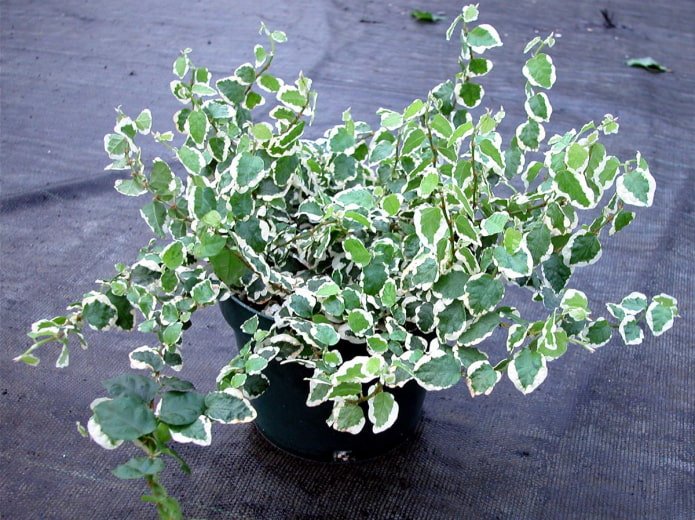
Adiantum
It is popularly called a long-lived fern. This is a climbing plant that grows in nature at the foot of waterfalls and streams. The creeping stems are covered with small bright green leaves that look like a feather.
It is successfully grown indoors, but is afraid of the sun, dust, cigarette smoke and does not like being moved to another place. In summer, it needs generous spraying. It grows faster in loose and acidic soils enriched with humus.
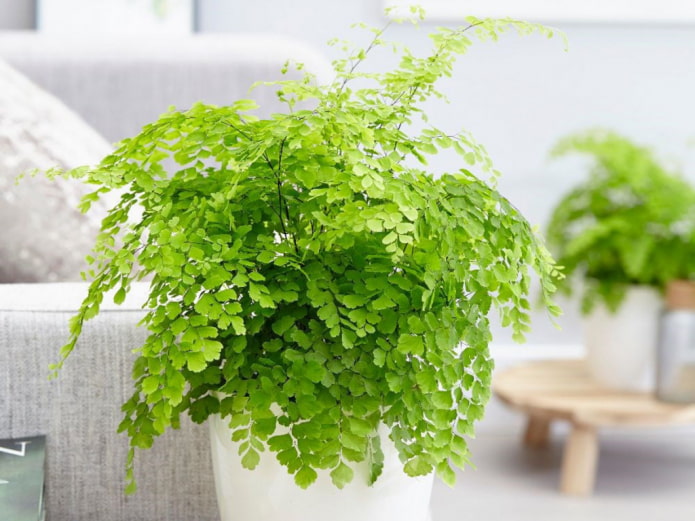
Common ivy or hedera
Indoor ivy is especially appreciated by decorators, because with the help of its long stems you can create beautiful complex compositions. Climbing hedera successfully strengthens itself on a support, quickly adapts to any degree of illumination, but does not tolerate direct rays.
It grows best at a temperature of +21 to +25 degrees, does not like cold windowsills. It needs moderate watering, is afraid of excessive humidity. The leaves must be wiped from dust once every two weeks.
There is a common superstition that hedera drives away men. But in Ancient Greece, ivy was considered a symbol of male fidelity and strong love.
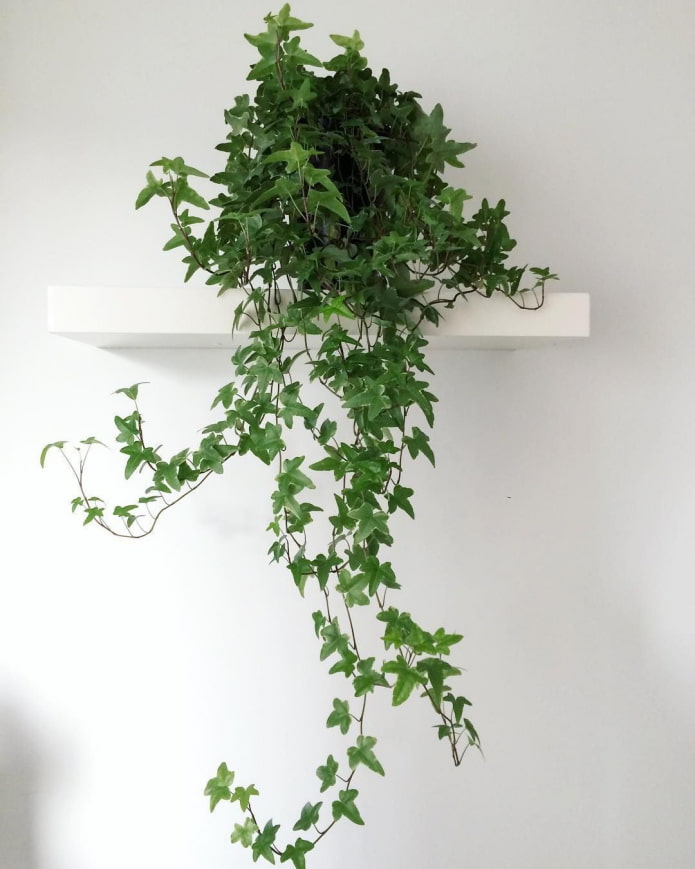
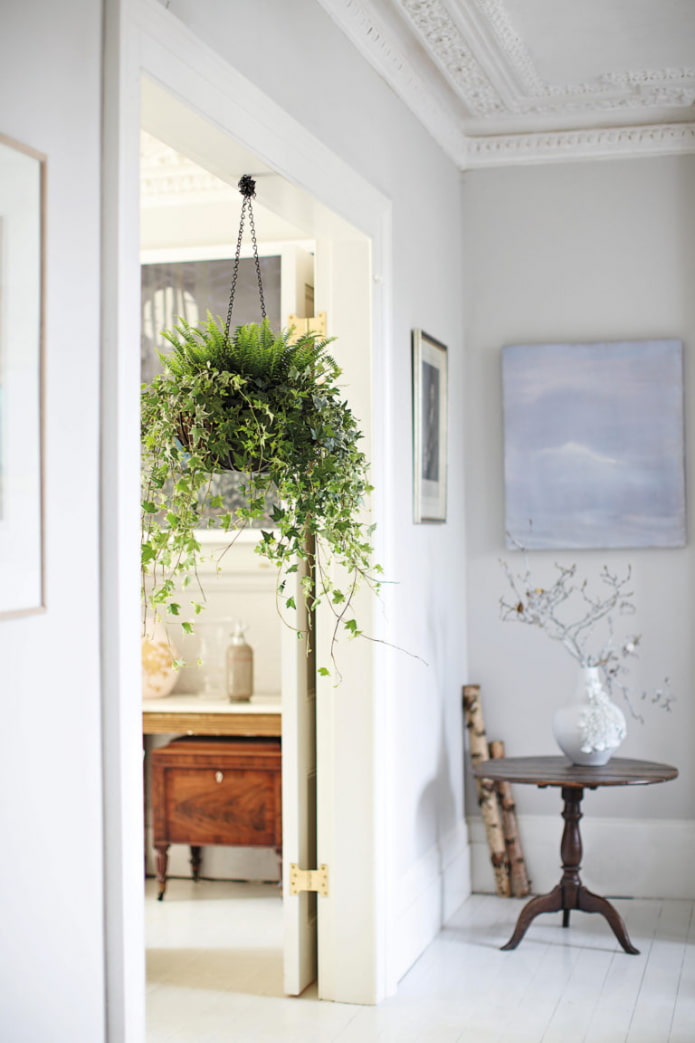
Morning Glory
The most popular species is Ipomoea batata – this beautiful climbing plant with blue flowers will transform any room. The leaves are heart-shaped, and the colors vary from yellow to purple.
Keep in mind that Ipomoea grows quickly.
It loves good lighting, otherwise the color of the foliage will begin to fade. As for watering, Ipomoea is absolutely not whimsical. Morning glory has low susceptibility to diseases and insects.


Wax ivy or hoya
A climbing plant that will thank you with beautiful flowers and a magical aroma in response to proper care. Flowering lasts for several months, but for this it is necessary to keep the vine warm (about 25 degrees) and in a sufficiently illuminated place. At the same time, ivy can tolerate direct sunlight, but it is preferable to place the plant on windows facing east or west.
Hoya prefers abundant watering, which is done as the soil dries. The plant should be bathed in settled warm water. Wax ivy is propagated by cuttings.
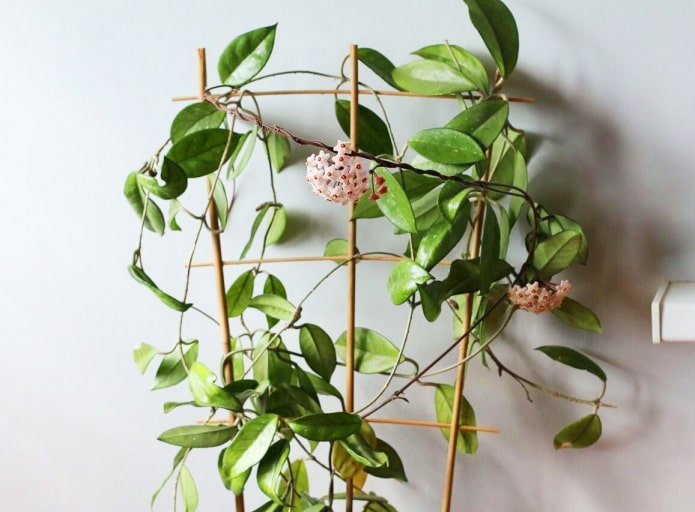
Tradescantia
Another tropical plant, which is distinguished by a dense interweaving of shoots and rapid growth. Named in honor of the English botanists and travelers Tradescants, father and son. The flower purifies the air and even reduces the danger of electromagnetic radiation. The palette can vary from dark green to yellow, pink and burgundy.
To get a lush bush, the shoots need to be pinched. Tradescantia looks especially impressive on elevations or hanging pots. Sometimes cut branches are placed in a vase with water, and they retain a fresh look for a long time. It loves diffused light, warmth up to 26 degrees and moderate watering once every 2-3 days (in winter – after the soil dries out).
Tradescantia is liked by cats, so the pot should be placed in the highest and most inaccessible places. You should also be wary of Tradescantia pallida, the juice of which can irritate the skin.

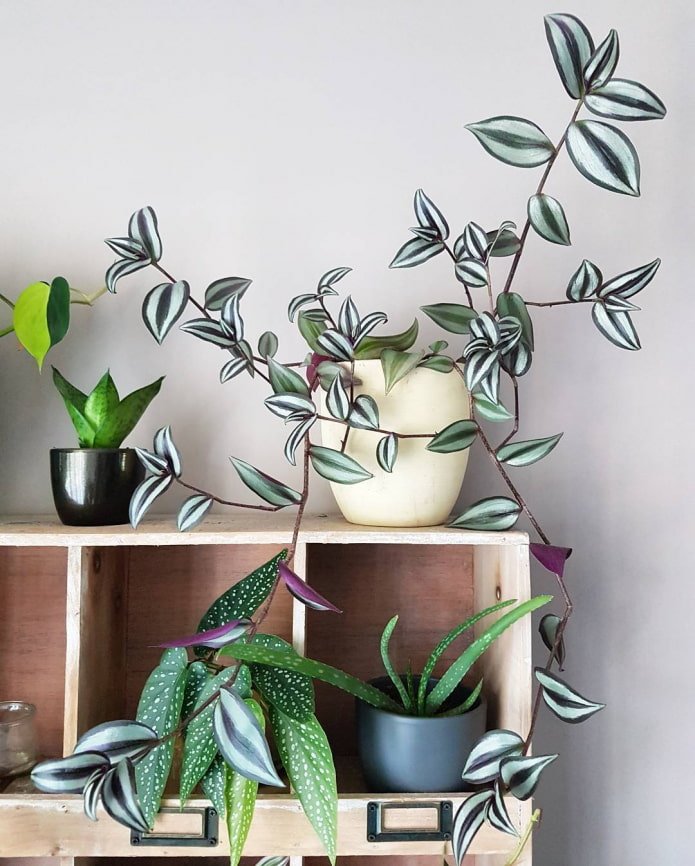
Cissus
This is a climbing plant, which is also called indoor grapes or birch. Cissus is valued for its decorative foliage and unpretentiousness, so it is often grown in offices and public places. The tendrils of the grape vine cling well to supports.
The plant likes both brightly lit places and partial shade. Cissus is thermophilic, does not tolerate drafts and sheds leaves due to sudden changes in temperature. In spring and summer, it must be sprayed, bathed in the shower and watered as soon as the soil dries.
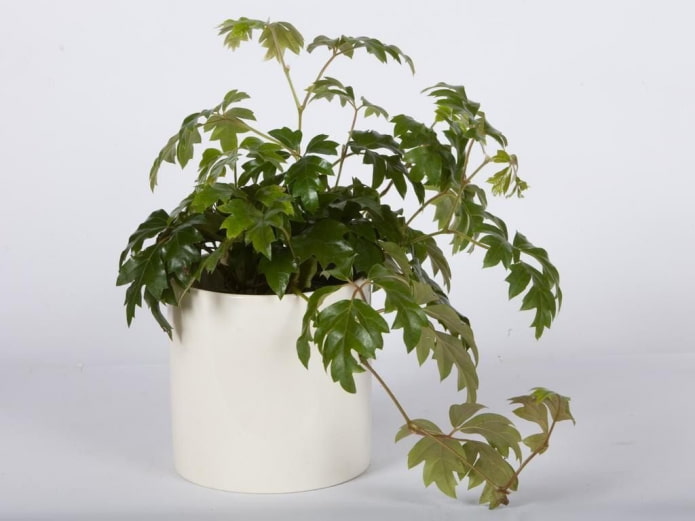
Philodendron
The most accessible for growing in an apartment is the climbing philodendron, which can be grown in a small pot. Other species can reach gigantic sizes and are more suitable for spacious rooms.
The plant loves warmth and high humidity, does not tolerate drafts and direct rays. Philodendron grows well in bright but diffused light. In summer, it needs abundant watering with water without lime. Overwatering is destructive for it.
Surprisingly, philodendron reproduces with any of its parts: seeds, leaves, trunk, top or roots.
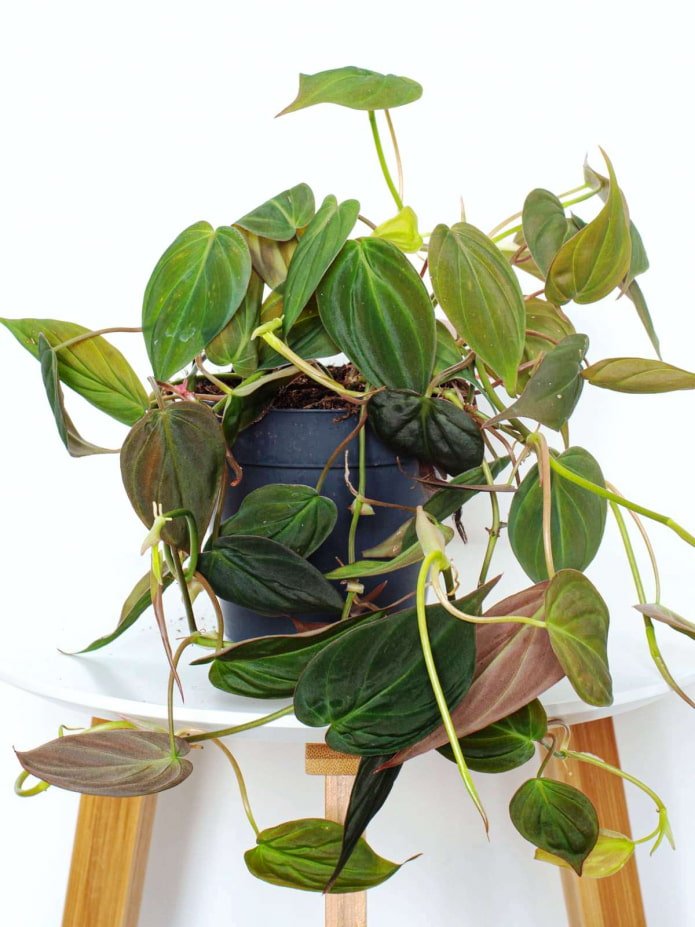

Scindapsus
Resembles some species of philodendron. It has dense heart-shaped leaves with light spots. The hanging vine lives on the trunks of tropical trees and can climb to a height of 15 meters. Indoor scindapus is used to decorate walls, forming a crown with ladders and ropes. It is better to guide young shoots, as old ones can simply break.
It loves shade and partial shade, but two-color varieties require more sunlight: otherwise, the foliage can darken. It needs regular moderate watering, it is necessary to fertilize once every 3 weeks. A mixture of peat, humus and sand is suitable as soil. There should be drainage at the bottom of the pot. Do not fertilize during the dormant period – from late autumn to early spring.
Climbing scindapsus adds 40 cm in length per year, so the bush should be trimmed and the resulting cuttings rooted.
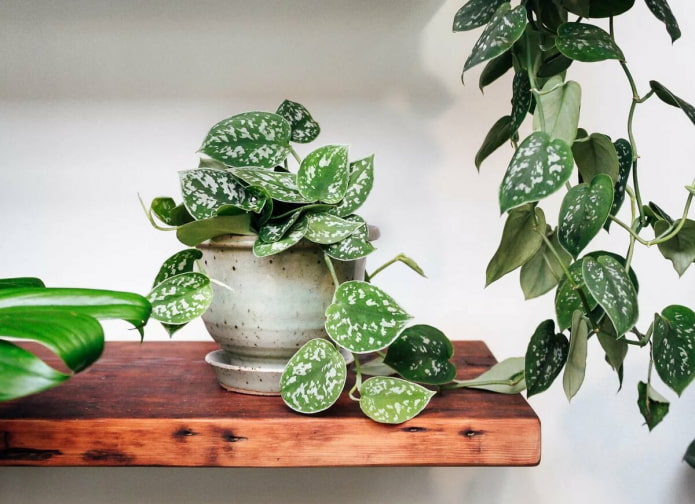
Campanula
A flowering climbing plant of the Campanula family. It got its name, which translates as “bell”, due to the shape of the flower. Campanula grows indoors, but it can be used to decorate a balcony or garden. Grown in hanging pots.
Carved leaves grow on long stems, which are covered with blue or snow-white flowers. It is better to place the climbing flower on western or eastern windows. Campanula does not like temperature changes, and the closer the radiators, the worse it feels. In the autumn-spring period, the bellflower can go for a long time without watering, and in the summer it needs to be watered with purified warm water, preventing the soil from drying out.

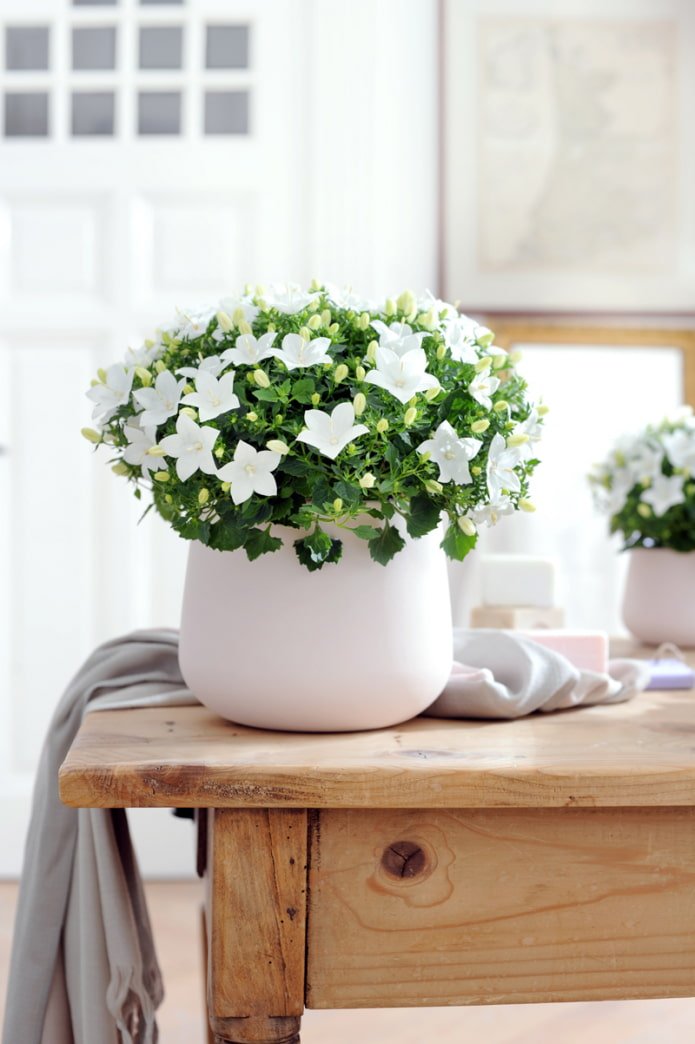
Senecio gerreinii
This is a creeping succulent with fleshy green leaves that look like berries. They accumulate nutrients. The ragwort looks original and fits perfectly into laconic modern interiors.
Unpretentious, resistant to various diseases, easy to root. Loves bright places, but does not tolerate the sun. From spring to autumn, watering should be generous, and in winter it is enough to simply moisten the soil and keep the plant in a cool room. It should be fertilized only during active growth, so as not to damage the roots.

Monstera
An evergreen climbing plant with large carved leaves. The name comes from the word “monster”, since the monstera, in addition to its large size, has long aerial roots that entangle trees. Valued for its relative unpretentiousness, decorativeness and ability to ionize air. Improves the atmosphere in the house due to its large leaf mass.
Indoor monstera can grow strongly, so it is provided with vertical support. Prefers bright diffused light, thorough watering and spraying in the heat. In the warm season, it is necessary to feed twice a month.
It should be remembered that the juice of the monstera is poisonous.

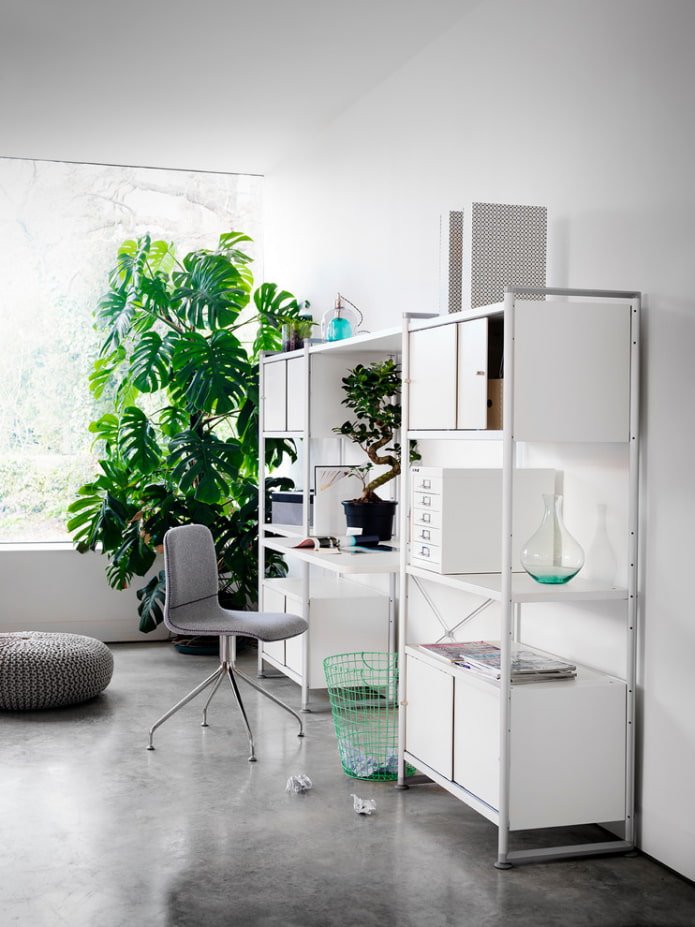
Ampelous begonia
This is a liana with red, pink or white flowers. If you place it in a bright place and provide regular watering without over-watering, the climbing indoor begonia will delight you with flowers all spring and summer.
It needs regular fertilizing with fertilizers with a high content of nitrogen and minerals. It is better to grow begonia in a hanging basket or in a vase on a long stem. Dried flowers should be removed regularly.
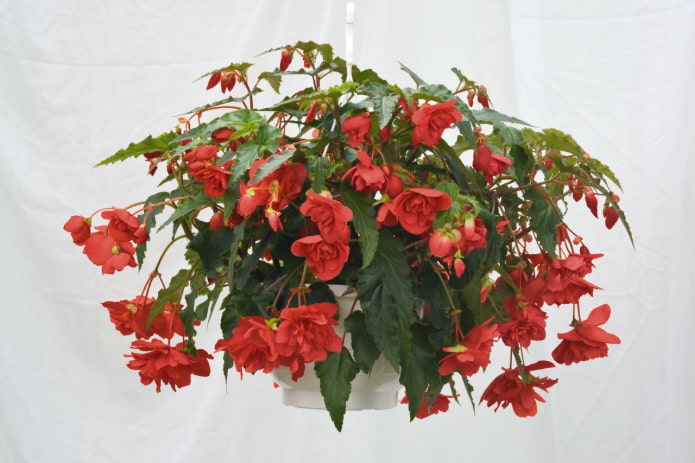
Asparagus
A spectacular plant that purifies the air of harmful substances. It grows quickly in open space, where nothing constrains it. Loves diffused rays, high humidity, room temperature and regular fertilizing.
It can act as an ampelous plant and live in a hanging pot, hanging its fluffy climbing stems. The most popular types of asparagus are racemose with soft to the touch branches and pinnate with leaves in the form of triangular scales.

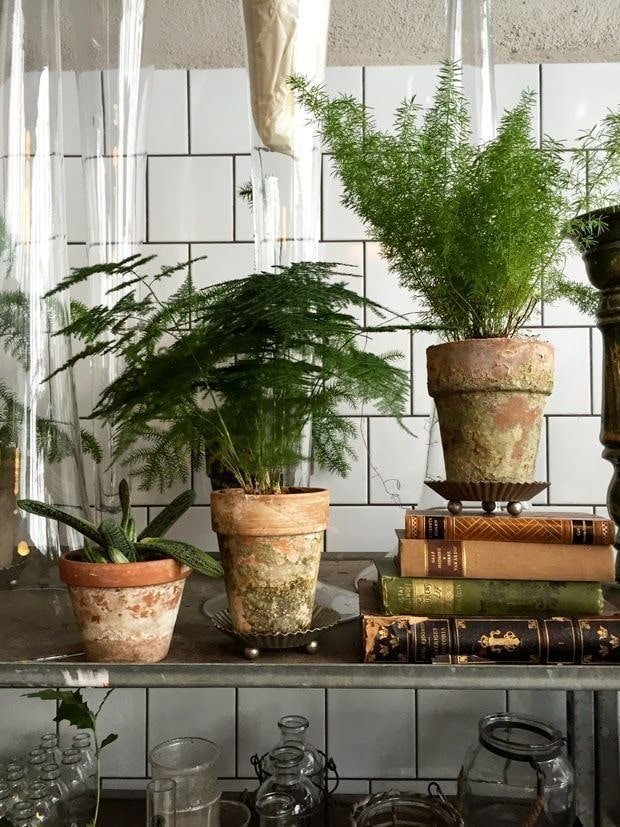
Jasmine
The houseplant is most often sold woven into an arch. It has long stems, dense foliage and white inflorescences that exude a rich, pleasant aroma. For this reason, jasmine should not be kept in the bedroom.
It is not demanding to temperature, but does not tolerate drafts. It loves illuminated places and soil moistened with soft water. On hot days, it needs to be sprayed. The climbing flower needs to be fertilized once a week from mid-spring to early autumn. In spring, the plant should be trimmed – then it will delight you with its splendor and new buds.
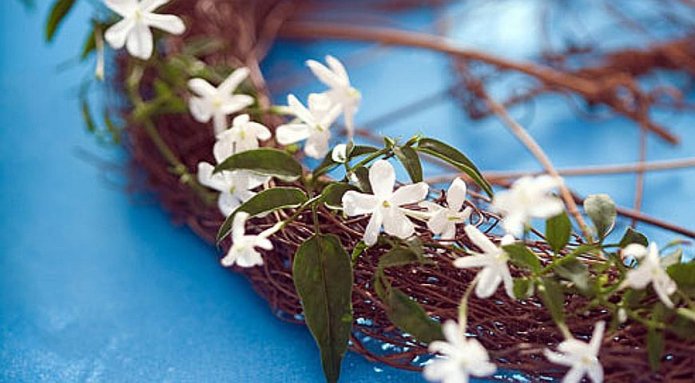
Rhaphidophora
Two species are most in demand as indoor plants:
- Rhaphidophora stalked with heart-shaped leaves, which is great for vertical gardening.
- Rhaphidophora decumbent, similar to a monstera, with leathery dissected leaves.
The plant loves light. Like many climbing vines, it needs generous watering, spraying and regular feeding. Branching can be enhanced by pinching the stems.

Tropical vines and climbing plants are easy to care for and pleasant to watch. They are an indispensable material for decorating apartments and houses. Using the photos and names of indoor plants provided, it is easy to choose a suitable climbing decoration for your interior.
Now reading:
- Half-timbered house: 40 unique photos and the best ideas for inspiration
- 10 stylish ideas for kitchen design in gray and white palette.
- Glossy or matte kitchen: 10 pros and cons for choosing.
- 10 Best Ways to Conveniently Store Garden Tools.
- 10 Fragrant Plants for the Home That Are the Perfect Replacement for Air Fresheners